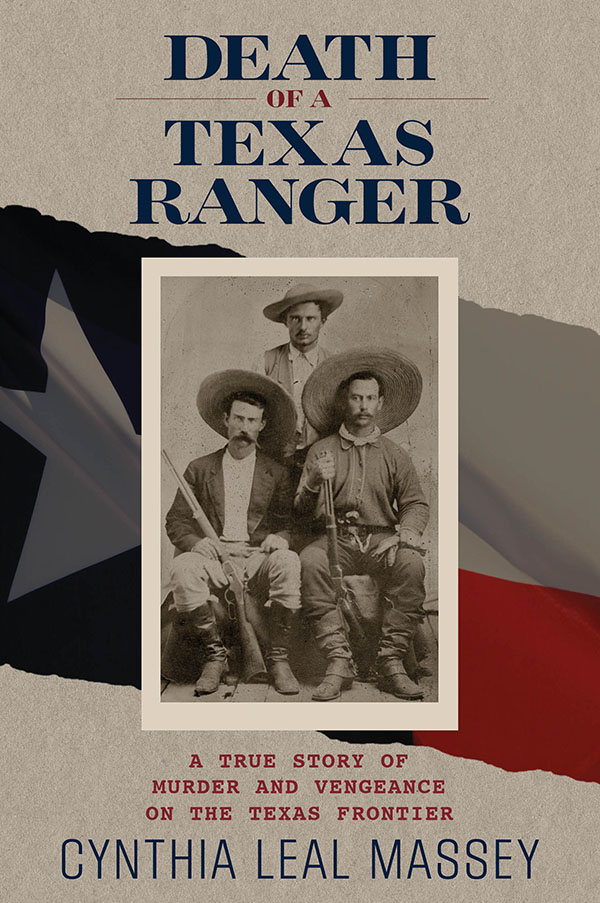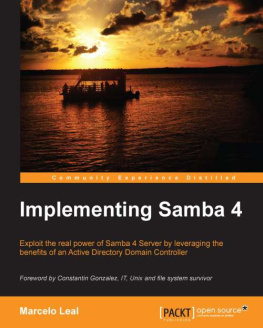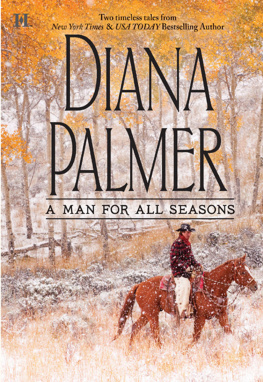Cynthia Leal Massey - Death of a Texas Ranger
Here you can read online Cynthia Leal Massey - Death of a Texas Ranger full text of the book (entire story) in english for free. Download pdf and epub, get meaning, cover and reviews about this ebook. year: 2014, publisher: TwoDot, genre: Non-fiction. Description of the work, (preface) as well as reviews are available. Best literature library LitArk.com created for fans of good reading and offers a wide selection of genres:
Romance novel
Science fiction
Adventure
Detective
Science
History
Home and family
Prose
Art
Politics
Computer
Non-fiction
Religion
Business
Children
Humor
Choose a favorite category and find really read worthwhile books. Enjoy immersion in the world of imagination, feel the emotions of the characters or learn something new for yourself, make an fascinating discovery.

- Book:Death of a Texas Ranger
- Author:
- Publisher:TwoDot
- Genre:
- Year:2014
- Rating:3 / 5
- Favourites:Add to favourites
- Your mark:
- 60
- 1
- 2
- 3
- 4
- 5
Death of a Texas Ranger: summary, description and annotation
We offer to read an annotation, description, summary or preface (depends on what the author of the book "Death of a Texas Ranger" wrote himself). If you haven't found the necessary information about the book — write in the comments, we will try to find it.
Death of a Texas Ranger — read online for free the complete book (whole text) full work
Below is the text of the book, divided by pages. System saving the place of the last page read, allows you to conveniently read the book "Death of a Texas Ranger" online for free, without having to search again every time where you left off. Put a bookmark, and you can go to the page where you finished reading at any time.
Font size:
Interval:
Bookmark:

Death of a Texas Ranger
Death of a Texas Ranger
A True Story of Murder and Vengeance on the Texas Frontier
Cynthia Leal Massey

Guilford, Connecticut
Helena, Montana
An imprint of Globe Pequot Press

Copyright 2014 by Cynthia Y. Massey
ALL RIGHTS RESERVED. No part of this book may be reproduced or transmitted in any form by any means, electronic or mechanical, including photocopying and recording, or by any information storage and retrieval system, except as may be expressly permitted in writing from the publisher. Requests for permission should be addressed to Globe Pequot Press, Attn: Rights and Permissions Department, PO Box 480, Guilford, CT 06437.
TwoDot is a registered trademark of Morris Book Publishing, LLC.
Project editor: Lauren Szalkiewicz
Layout: Chris Mongillo
Library of Congress Cataloging-in-Publication data is available on file.
eISBN 978-1-4930-1092-9
Contents
Preface
While researching a history book about Helotes, Texas, a small town near San Antonio, I heard bits and pieces of a story about the murder of a sergeant in Texas Ranger Minute Men Troop V of Medina County, which mustered into service September 1, 1872. Several men from the Helotes settlement in northwest Bexar County had enlisted in the troop, composed of farmers and ranchers, to stave off Indian raids.
In the summer of 1873, after the troop had been together for almost a year, Sergeant John Green was shot and killed by a Ranger under his command in circumstances shrouded in mystery. The Ranger who killed himCesario Menchacawas one of three in the troop of Mexican descent. A farmer, Menchaca had also served as a constable in the Helotes precinct.
I continued to research and ask questions, and slowly the details of the murder emerged. The more I learned about the events surrounding the shooting, the more intrigued I became. When I learned that Old Man Marnocha prominent, but eccentric, characterwas involved, I was hooked.
Gabriel Wilson Marnoch, also known as G. W. Marnock (18381920), was the eldest son of the founding family of Helotes. An emigrant from Scotland, he became a frontier naturalist who discovered four new reptile and amphibian species in the Helotes hills and served as a field correspondent for paleontologist Professor Edward Drinker Cope. Marnochs herpetological collections can now be found at the Smithsonian Institution in Washington, DC, and the Mayborn Museum at Baylor University. Marnoch also carried on an extensive correspondence by letter with the Father of American Vertebrate Paleontology, Professor Joseph Leidy of the Academy of Natural Sciences in Philadelphia.
The Marnoch homestead, built in 1859, is a Texas Historic Landmark and is mostly associated with Gabriel, who lived there with his wife and children until his death.
Eighty-four-year-old Armin Eldmendorf, who taught school in Helotes in 1907, wrote in a 1974 memoir: I inquired how to get to the Marnock [ sic ] house, as Gabriel Marnock was one of the three school trustees I had to see. The saloonkeeper warned me about Marnock and confirmed the story I had been given by the County Superintendent of Schools. Marnock, it was rumored, was an educated man who had committed two murders.
Two murders?
An exhaustive search of county criminal records and newspapers yielded the story of one murder. But further research led me from Marnoch to the tale of John Green and his killer, Cesario Menchaca.
As I delved more deeply into the story of the men and the Texas Ranger troop, I realized this was more than a story about a killing. It was the story of an era. Greens killing exemplifies the chaotic frontier society in Texas after the Civil War, a time fraught with political turmoil, cultural clashes, and a tenuous hold on life.
And yet, even amid the chaos, the virgin landscape of Texas was a magnet to those interested in the natural sciences in the nineteenth century, an era often referred to as the Age of Darwin, a nod to British naturalist Charles Darwin, who in 1859 and 1871, respectively, published his seminal scientific works, The Origin of Species and The Descent of Man.
Darwins works espoused the theory of evolution by means of natural selection and inspired naturalists throughout the world. In Texas, those engaged in the natural sciences often had to contend with hostility and suspicion. While pioneers struggled for survival, intrepid and often eccentric men traipsed across the countryside with large hooks, snake bags, and jars filled with alcohol preservatives, into which were stuffed an assortment of wildlife. It is not hard to imagine the dismay of settlers neither scientifically inclined, nor willing to concede relation to apes.
Nevertheless, according to Samuel Wood Geiser, author of Naturalists of the Frontier , several hundred men of science labored in Texas in the pioneer days. In particular, the 1870s were a time of awakened interest in natural history in Texas, and during this decade Helotess preeminent naturalist Gabriel Wilson Marnoch began his work in earnest.
The 1870s also saw disgruntled Indian tribes forced onto US reservations and others who fled across the Mexican border wage an escalating, frantic, but ultimately foiled crusade to regain their territory and prominence. Their bounty was horses, and they could not have chosen a more valuable commodity to steal from the Texan usurpers.
Cynthia Leal Massey
Helotes, Texas
PART ONE
18701880
We will now discuss in a little more detail the struggle for existence.
Charles Darwin, The Origin of Species
I sat up many nights at my window with a blanket and had a gun under it and I thought every minute the Indians were coming in the yard.
Augusta Ballscheit
Indians Were Coming
February 1870
John Green dozed off on the couch to the aroma of Gussies cooking and the swish of her broom on the porch. The tension in his muscles relaxed after the long horseback ride with Jacob Hoffman. Riding through a neighbors ranch, theyd found a dead mare pierced with arrows, pieces of flesh cut from its haunch, a sure sign that Comanches were in the area. The beginning of 1870 was proving no different from the previous years. In fact, Indian raids were increasing all over Texas.
Despite the new line of forts reinstituted along the Texas frontier a year after the end of the war and an 1867 treaty that conferred firm title to almost three million acres to the Indians north of the Washita River (in exchange for ninety million acres ceded to the US government), sporadic raids and killings continued. The tribes, accustomed to roaming the plains at will, did not like the aggressive military muscle used to move them onto the reservations, nor the confinement to their allotted land. They began slipping out of the reservations, and their favorite place of mayhem was Texas, the former republic.
Since the mid-1700s, the Comanches had ruled the Texas plains. Although Texas had joined the Union in 1845, the Comanches considered it a territory apart from the United States and not governed by the rules of the treaty.
Greens infant son Willie was snuggled in a quilt to keep off the chill. The babe slept peacefully in his cradle, despite the moonlight piercing through cracks in the shuttered windows of the limestone cabin.
Font size:
Interval:
Bookmark:
Similar books «Death of a Texas Ranger»
Look at similar books to Death of a Texas Ranger. We have selected literature similar in name and meaning in the hope of providing readers with more options to find new, interesting, not yet read works.
Discussion, reviews of the book Death of a Texas Ranger and just readers' own opinions. Leave your comments, write what you think about the work, its meaning or the main characters. Specify what exactly you liked and what you didn't like, and why you think so.


